#european stick insect
Text

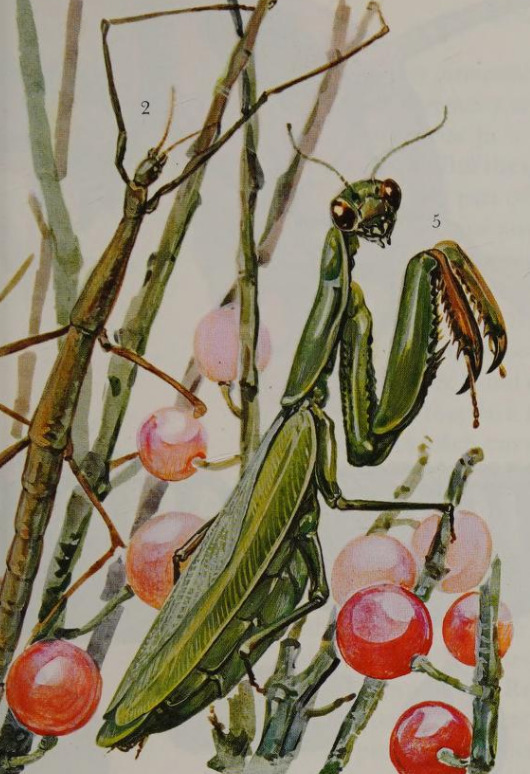

Grzimek's Animal Life Encyclopedia: vol. 2 - Insects. Written by Dr. Bernhard Grzimek. 1984.
Internet Archive
1.) European mole cricket (Gryllotalpa gryllotalpa)
2.) European stick insect (Bacillus rossius)
3.) Anchiale maculata
4.) Seychelles leaf insect (Pulchriphyllium bioculatum)
5.) European mantis (Mantis religiosa)
#bugs#insects#mole crickets#european mole cricket#stick insects#european stick insect#leaf insects#seychelles leaf insect#mantids#european mantis
276 notes
·
View notes
Text
So apparently today is also #WorldStickInsectDay? ¯\_(ツ)_/¯

Marianne North (British, 1830-90)
Leaf-Insects and Stick-Insects, Java, c.1876
oil on board, H 35.5 x W 24.4 cm
Kew Gardens Marianne North Gallery MN676
#animals in art#animal holiday#european art#19th century art#Marianne North#natural history art#painting#oil painting#women artists#women in science#British art#insect#insects#Phasmatodea#Kew Gardens#World Stick Insect Day
103 notes
·
View notes
Photo

Common Water Stick Insect (Ranatra linearis)
Family: Water Scorpion Family (Nepidae)
IUCN Conservation Status: Unassessed
Although its name and elongated, stick-like body may suggest otherwise, the Common Water Stick Insect is not closely related to true stick insects, instead being a highly specialized species of water scorpion (a family of aquatic, carnivorous insects characterised by their hooked front legs which, like the legs of a mantis, are modified to be used for grasping prey.) Although its stick-like body has developed independently of the true stick insects found on land, it is used for a similar purpose - like most stick insects, Common Water Stick Insects spend much of their lives perched motionless on branches or other forms of submerged vegetation, making them difficult to distinguish from the plants around them. Remaining in this position conceals them both from potential predators and from their prey, and when a suitably sized animal (usually a large aquatic insect, tadpole or small fish) gets close enough they use their powerful hook forelimbs to quickly grasp and restrain it before inserting their sharp-tipped, tube-like mouths and draining the prey of nutritious internal fluids such as blood or haemolymph (the equivalent of blood in arthropods.) Found in well vegetated ponds, lakes and (on rare occasions) lagoons across much of Europe and North America, Common Water Stick Insects move between perches by swimming, but are unable to extract oxygen from water and must instead keep the long, tail-like protrusion at the tip of their abdomen, which essentially serves as a rear-mounted organic snorkel, above the surface when perching in order to breathe. Members of this species breed in the mid spring (with females depositing a large number of tiny eggs in neat rows on aquatic vegetation shortly afterwards,) and their larvae, which are carnivorous from birth, reach full maturity when around 2 months old. Though they rarely leave the water if left to their own devices, a lack of prey may lead to large numbers of Common Water Stick Insects surfacing and taking flight in search of new hunting grounds.
--------------------------------------------------------------------------
Image Source: https://www.inaturalist.org/taxa/362340-Ranatra-linearis
#Common Water Stick Insect#Water stick insect#insect#insects#zoology#biology#entomology#arthropods#arthropod#north american wildlife#european wildlife#aquatic wildlife#pond wildlife#bug#bugs
49 notes
·
View notes
Text
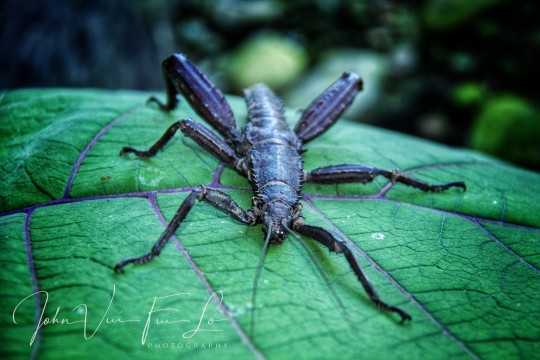

Lord Howe Island Stick Insect aka Tree Lobster (Dryococelus australis), family Phasmatidae, Lorde Howe Island, Australia
CRITICALLY ENDANGERED.
These large stick insects can grow up to 20 cm (8 in) in length.
They have been thought to be extinct at various times, but have been rediscovered in remote locations on the island periodically.
The introduction of Europeans - using them as bait, and black rats - who ate them, lead to their precipitous population decline.
photographs by John Vui Fui Lo
237 notes
·
View notes
Text
The 11 most venomous animals you can find in Germany
Ususlly you would think about exotic species when it comes to venomous animals, particularly species from Australia. Others are so common that they spontaneously don't come to our mind, such as bees, wasps, or hornets.
However, there are indeed venomous species that live in Germany, which can cause discomfort to severe pain, and – in rare cases – death.

Ammen-Dornfinger (Yellow Sac Spider), its fangs can penetrate the human skin and inject poison into the tissue. Symptoms are usually not worse than a bee sting, but can also cause nausea, vomiting, and shivers.
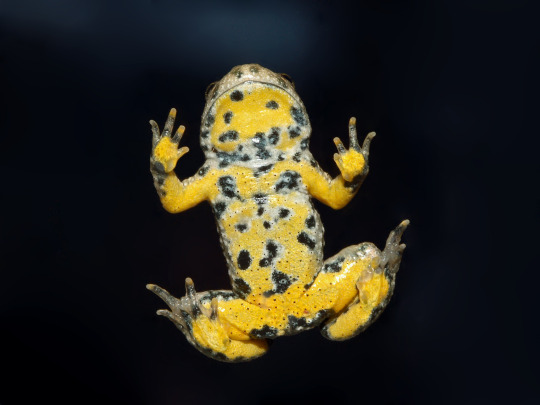
Gelbbauchunke (Yellow-Bellied Toad), the mucus contains a poison that is irritating to the skin and particulaly the mucosa and the eyes.
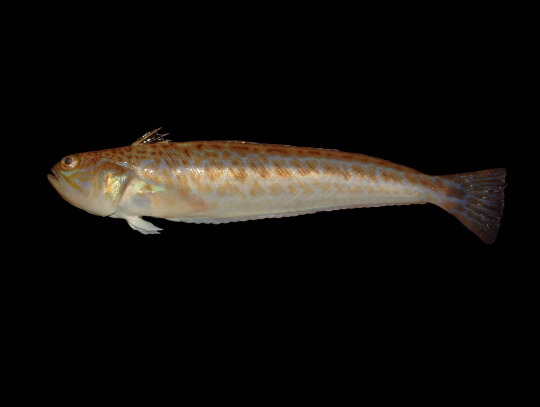
Petermännchen (Weeverfish), likes to bury itself in the ground near sandy beaches so that only the venomous spines stick out, causing a danger to the feet of tourusts. The symptoms include excruciating pain, swelling, redness, heat, neusea, vomiting, joint aches, headache, lightheadedness, increased urination, tremors, and in rare cases abnormal heart rhythm, seizures, gangrene, tissue degeneration, and unconciousness. This fish is considered the most dangerous venomous species that lives in Germany.

Spitzmäuse (Shrews) have venomous teeth. However, they rarely bite humans, and even more rarely have the power topenetrate the skin. They mostly use their venom to kill insects.

Kreuzotter (Common European Viper) are elusive animals, so very few peple have actually seen one. Their venom is three times more poisonous than that of the most dangerous rattlesnake. However, the viper doesn't like to waste its venom, that it also uses for hunting, for defense, and it has a much smaller reservoir. That's why the viper is only dangerous for small children and elderly people. Between 1959 and 2003, no viper-related deaths were recorded, and in 2004, an 81-year-old woman died. Victims often have to be hospitalized, about 10 % of them required ICU treatment. The symptoms include severe swelling, shortness of breath, and heart issues, in rere cases paralysis of the affected limb. On the other hand, numerous cases are known where the victims had no symptoms at all, probably because the viper didn't inject the venom.
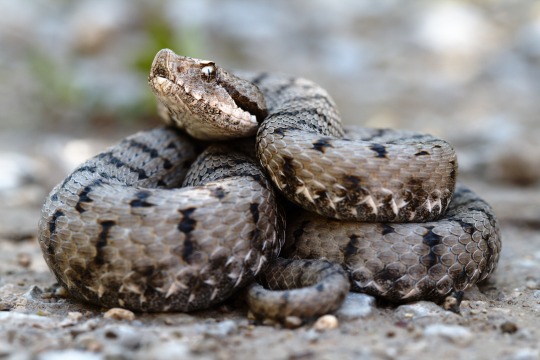
Aspisviper (Aspic Viper) occurs only in the southern parts of the Black Forest and is very rare. The venom is similar to that of the common viper. It is expected to expand its territory in the future due to global warming.
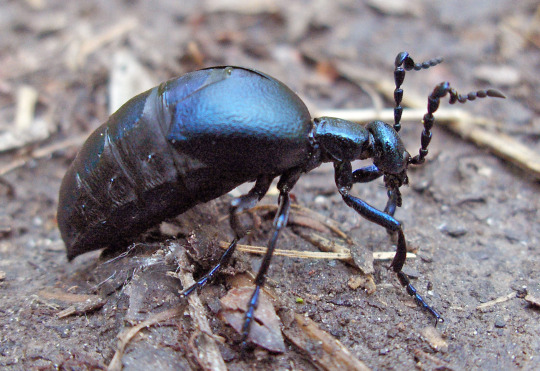
Schwarzblauer Ölkäfer (European Oil Beetle) sprays a substance that is severely irritant to eyes and mucosa.

Eichen-Prozessionsspinner (Oak Processionary), hairs of the larvae easily break off and float through the air. They contain a venom that causes symptoms that reach from mild urticaria to severe dermatitis. If inhaled, the hairs can cause bronchitis, painful cough, and asthma.
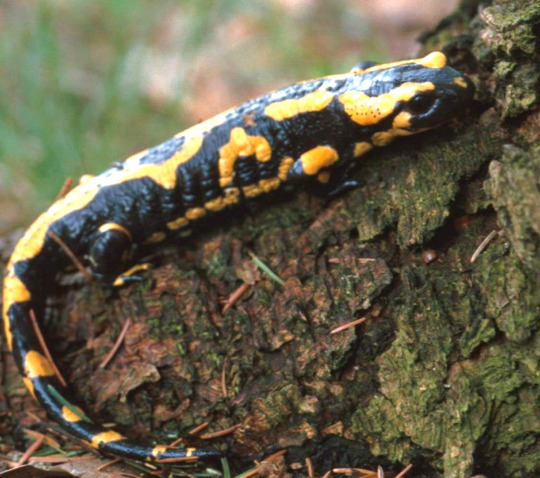
Feuersalamander (Fire Salamander) has venom on the surface of the skin. In humans, it causes a slightly burning sensation on the skin, but it is absolutely deadly for dogs.

Gelbe Haarqualle / Feuerqualle (Lion's Mane Jellyfish): Touching this jellyfish causes excruciating pain, eczema, fever and breathing trouble.

Wasserspinne (Diving Bell Spider) can penetrate the human skin and inject venom. The effects are usually mild and not worse than a bee sting.
315 notes
·
View notes
Text


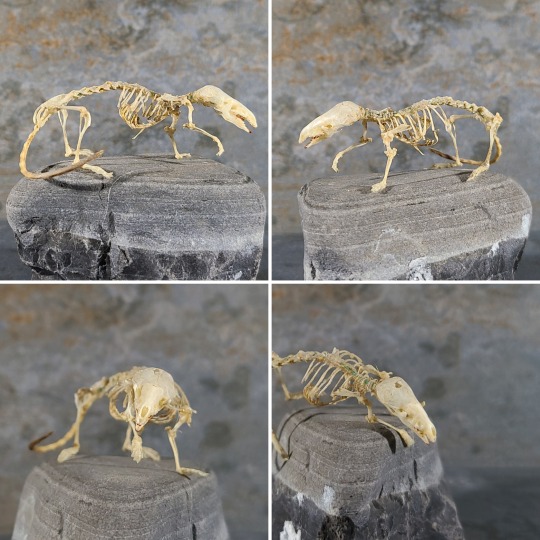
First up for Mammal Week are Insectivors!
I have very few of these but heres 3 Ive acquired over time.
European Hedgehog
European Mole
Common Shrew
Theres are also Pygmy and Water Shrews and out on the Isles of Scilly and Jersey lie the Lesser Whited Toothed Shrew. The Greater Whited Toothed Shrew usually found on Guernsey and other Channel Isles apparently turned up in Sunderland of all places after being caught by a Cat!
The Hedgehog is a rapidly declining resident leading to a Red Listed status. However our love for these nighttime visitors has actually seen a rise in population numbers in Urban settings so keep up the hard work. Hedgehogs will also foam at the mouth, this is to self anoint coating this onto thier spines its thought to provide a new smell as a potential predator deterrent but researchers arent exactly sure
The same cant be said for the rarely seen Mole who have no legal protection. Historically used for fur and culled for garden interference they spend their time underground. The fur doesnt grow in a set direction and its thought to aid with manoeuvring around a common myth is they dont have eyes, they do, albeit basic.
Common Shrews on the other hand dont stick around too long. Thats because they need to eat almost 90% of its body weight a day to survive, feasting on insects theyre always on the hunt. So its no wonder that despite them being Britain's second most numerous mammal you dont find em all too often.
22/04/24
#vulture culture uk#vulture culture#oddities#taxidermy#bones#skull#skull collecting#animal skull#curiosities#mammal week
22 notes
·
View notes
Text
Nature Journaling - Girdled Tree
Originally posted on my work website but I wanted to share it here too.

Whenever I’m leading a hike or even just talking with visitors in the nature center, there are always a few questions I find myself answering frequently enough that they stick in my mind. So, during a chilly hike through the fresh snow a few days ago, I stumbled upon the cause of one of these often asked questions: “Why is there a ring cut into some of the trees throughout the forest?”
To me this is the kind of question that begs for an entry in my nature journal, it’s the perfect subject o spark curiosity, make careful observations, and in this case, follow up with answers. But as much as I enjoy nature journaling outdoors, a growing cold breeze reminded me I could finish the project in the office, so I took some photos, made some notes about what I could see or feel and go to work in the warmth of the Nature Center.
Journaling About an Odd Tree
But my eyes, and fingers, are drawn to the sap, frozen by the temperature, mid-drip down the side of the tree in off-white streaks. In warmer months, I’ve touched it and pulled away sticky fingers, but now, the sap is solid, a little flaky, and cemented to the bark of the tree. I can’t help but think about maple syrup and wonder, how cold does sap need to be to freeze?
So many questions, thoughts, and ideas pop into my mind every time I see these trees. And while I could go on for pages about all three topics, I think I’d like to these observations to answer the question posed earlier: “Why is there a ring cut into some of the trees throughout the forest?”
What Makes This Tree Different?
To start, let’s take a moment to identify the tree itself. The trees on our trail system that are subject to this odd process are Norway Spruces, they make up a large portion of the forest just beyond the parking lot and along the trail to our bridges. These evergreens can grow quickly, reaching a height of 60 feet tall in a short twenty years. In its native European habitat, it can even grow to be 150 feet tall!
These trees being so far from their native habitat is part of the reason you might find a cut ring on the trunk. Nonnative trees like this are great for creating quick forests where there was once only agricultural field, but ideally, we want to restore the forest to native species like White pine, Hemlock, Black spruce, and other species. So as new native trees get planted, old Norway spruces get chopped down or have ring cut in them.
This process, called girdling, effectively kills the tree by removing the protective bark and the cambium layer. The bark protects the tree from sickness, fires, impacts and more while the cambium layer is responsible for creating new growth of the tree and passing nutrients between the roots and the canopy of the tree.
Without the protective bark or the cambium pathways for nutrients to travel, the tree will starve. The sap dripping down the trunk can no longer make it to the canopy high above. But it begs the question, “why not just cut the tree down?

Girdled to Make a Healthier Forest
If we wanted to just remove the trees, cutting them down would be best, but girdling some of the trees and leaving them purposely creates standing dead trees which provide essential forest habitat for a wide variety of species including mammals, birds, insects, and even amphibians. Research done on “Attributes of Standing Dead Trees in Forests” indicates that on average, healthy forests in the United States tend to have 11 standing live trees for every standing dead one. By girdling a few trees, we are purposefully creating habitat that better aligns with other healthy forests.
So, the next time you hike on a managed trail system and find a girdled tree, pause a moment and try to identify the cambium layer, the state of the sap and what animals might decide to make a home in it. These trees may look odd, but they have an important role to play in our forest habitats.
41 notes
·
View notes
Text
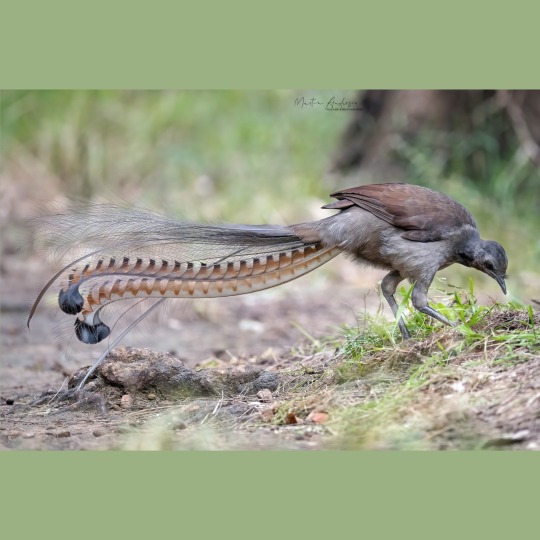
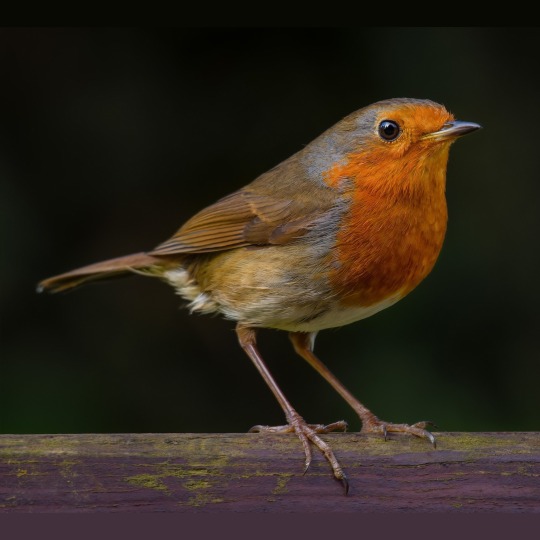
Remember to read about the contestants before voting!
Lyrebird
A very well known mimic of the bird world, the lyrebird is a loud and proud bird hailing from Australia. They tend to stick to the ground, and are only known to glide for short distances. They more often mimic birds than anything else, although they have been known to mimic dingoes, koalas, and yes sometimes human made sounds as well, such as a chainsaw. However, they don't tend to imitate humans unless they are a captive lyrebird. Learn More!
European Robin
Unrelated to the American robin, this robin lives in most of Europe. Instead of hunting for worms, it hunts for insects! It is a very popular bird, they often visit humans as they garden or turn up soil in order to grab a good meal. They do the same with wild boars, not being fearful of them. They sadly have a high mortality rate, but past the first year they’re in the clear, and the oldest living Robin has been reported as living for 19 years! They are also of least concern when it comes to conservation. Learn More!
(Lyrebird photo by Martin Anderson)
(European Robin photo by Alexander Montero)
118 notes
·
View notes
Text
differences between french, italian and german 1st chapter



i wanted to add the spanish and the brazilian versions too, but it was already a hassle to get the german and the italian ones.
anyway here's the first page in french, italian and german, surprisingly their colors are different. the contrast and the saturations and even the hues vary, even if by a little, but these are the ebook versions, maybe on paper they're different (the french one isn't very contrasted in particular). None of them replaced the original sound effects, only added the specific insects sounds for their language, not shoking as it's often done like this.
Ah something else i just noticed, french and italian still use the old version of hikaru’s shoes while the german edition uses the good one
I speak french, i can read italian and i don't know much more german than guten tag, so i can't really talk about the manner of speech of the latter 2 but in french it goes a bit like the english (yer instead of you/'re/r) with stuff like "j'peux" or "m'dame" (insteaf of "je peux" and "madame"). i think it work since these 2 languages don't really have a lot of dialects like japan does (i always say that if they were ever to translate kansai accent in romanian they should do in a moldavian way). As i was told, the german edition kinda sticked to the formal german (germany has a lot of dialects for every region). I can't pick up stuff about italian yet, so if you know more you can explain in a reblog



then of course it's hard to adapt word games in other languages. In japanese it was 'torture' and 'anus', written the same but with different pronunciation. Anyway, in italian yoshiki warns hikaru about his intonation, but i don't think the word has any other meaning based on the pronunciation. In french hiakru says "tortue" (turtle) instead of "torture" (still a thing abt pronunciation bcs you have to put weight on the r to make the difference). again, i don't speak german (my dutch is useless here welp) but it looks a bt more complex, maybe a mix in expressions, idk.



next is the reveal scene, french and german are like "i thought i was copying him perfectly" while italian is "i thought my imitation was perfect"
i think this is pretty much all i can say, i looked through the next pages, they seem identical more or less (yoshiki always avoids the girlfriend question hahaha)
oh wait wait wait update: here's something i could say more
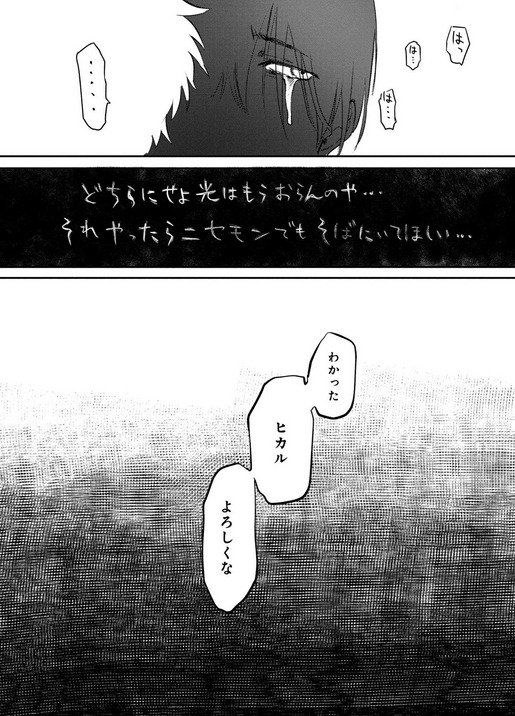
the moment yoshiki stops calling Hikaru 光 but ヒカル (to differenciate hikaru and unuki)



italian uses "", french changes the font, german doesn't really do anything. All start with "Hikaru is no longer" but the translations are different even if they lead to the same conclusion, italian says that "despite not being the real deal even a fake would be good", french says "even if he's not real i still want him next to me", and german i can guess it says something like "i want at least to have the fake hikaru"
im curious about the english translation next week
also y'all can reblog it in spanish (both latin and european) and portugese with these pages (you can get them from the amazon ebook sample which is free) bcs im curious how they look (and polish, but they don't have amazon)
#hikaru ga shinda natsu#the summer hikaru died#tsujinaka yoshiki#indo hikaru#mokumoku ren#mokmok len#hgsn translation
34 notes
·
View notes
Text
Reblog for a bigger sample size.
Say in the tags what you voted for and if you live in or outside the US
#polls#lord howe island#I thought Lord Howe Island was a state and aparently it's not but I already made this soooo....#state poll#australia#islands#Land Lobster#Meiolania#Kentia palms#lol added an extra E to Lord(e) Howe Island#I'm not remaking this poll though
6 notes
·
View notes
Text
So I’ve noticed that there haven’t been so many posts crossing my dash to help our European friends deal with this heat wave. Just in case y’all don’t remember from last year’s flood of advice for folks in the Pacific Northwest, here’s a list.
1. Stay hydrated. Water is good but it may not be enough. Fruits like watermelon, grapes, and oranges can help replace stuff you lose through sweat. Pedialyte, Gatorade, Powerade or other sports drinks or electrolyte drinks are literally life savers. Avoid alcoholic beverages.
2. Don’t forget creatures! Make sure your pets stay hydrated. Fill bowls with water for strays/wildlife. Put them in the shade to help stave off evaporation. Shallow dishes with pebbles work for insects like bees and butterflies. They’ll be suffering, too.
3. Reduce trips to only what is necessary and go very early or very late, if you can. If you must go out during the day, wear lightweight, loose fitting clothing and sunscreen. Hats help, too. Stick to the shade as much as possible.
4. Make sure your vehicle, if you have one, has fuel and coolant. You do not want to get stuck.
5. A damp cloth on the back of the neck can help keep you cool, so can a damp shirt. Take cool baths or showers. On really hot days I dunk my head and tie my hair up off my neck.
6. Advice from a southerner (American) without AC. Once the temperature hits 95°F (35°C), a fan is probably just going to blow hot air around. Open your windows at night to try and get cooler air in and block the sun out during the day with blackout curtains, blinds, or even a dark sheet.
7. Heat can dampen your appetite, but you still need to eat. Break out the charcuterie. You can hit all the necessary food groups without heating up your kitchen. You’ll feel better if you refuel.
8. Signs of heat exhaustion are headache, dizziness, loss of appetite, excessive sweating, muscle cramping, elevated breathing/pulse, elevated temp, and extreme thirst. Get out of the sun/heat immediately and cool down. Hydrate, hydrate, hydrate. Heat exhaustion doesn’t mean a trip to the hospital unless it turns into
9. Heatstroke, which has symptoms that include high temperature (40°C), incoherence, throbbing headache, dry, hot skin, nausea and vomiting, rapid pulse/breathing. A person suffering from heatstroke may seem drunk. Immediately call emergency services. Move the affected individual into a cooler place, remove excess clothing and cool them down by any means necessary. Dump water on them. Move them into a tub with cold water. Put ice packs (frozen veg works in a pinch) at their neck, armpits and groin. Whatever you can do will help.
Stay safe friends. Anyone who wants to add to the list (or translate any of the existing list), feel free.
114 notes
·
View notes
Text
Warrior Cats Prefixes List- B
I had a WC Name Generator on Perchance that I made but I don't seem to have access anymore, so I'm remaking it here as just a simple list. The definitions used are the ones that Clan cats have for those things, and thus are the origins of the names. Definitions used are whatever I found when I googled it.
Badger-: "[noun] a heavily built omnivorous nocturnal mammal of the weasel family, typically having a gray and black coat"
Bark-: "[noun] an outer layer of a woody plant such as a tree or stick; [noun] the sharp explosive cry of certain animals, especially a dog, fox, or seal"
Barley-: "[noun] a hardy cereal that has coarse bristles extending from the ears"
Basalt-: "[noun] a dark, fine-grained volcanic rock that sometimes displays a columnar structure"
Basil-: "[noun] an aromatic annual herb of the mint family; [noun] the leaves of the basil plant"
Bass-: "[noun] any of numerous edible marine or freshwater bony fishes"
Bat-: "[noun] any of a widely distributed order of nocturnal flying mammals that have wings formed from four elongated digits of the forelimb covered by a cutaneous membrane and rely on echolocation"
Bay-: "[noun] a broad inlet of the sea where the land curves inward; [noun] an indentation or recess in a range of hills or mountains"
Beach-: "[noun] a strip of land covered with sand, pebbles, or small stones at the edge of a body of water"
Bear-: "[noun] a large, heavy mammal that walks on the soles of its feet, having thick fur and a very short tail"
Beaver-: "[noun] a large semiaquatic broad-tailed rodent that is native to North America and northern Eurasia"
Bee-: "[noun] a honeybee; [noun] an insect of a large group to which the honeybee belongs, including many solitary as well as social kinds"
Beech-: "[noun] a large tree with smooth gray bark, glossy leaves, and hard, pale, fine-grained timber"
Beetle-: "[noun] an insect of an order distinguished by forewings typically modified into hard wing cases that cover and protect the hind wings and abdomen"
Belladonna-: "[noun] another name for the deadly nightshade plant"
Bellflower-: "[noun] a plant with bell-shaped flowers that are usually blue, purple, pink, or white"
Berry-: "[noun] a small roundish juicy fruit without a stone"
Big-: "[adj] of considerable size, extent, or intensity"
Bilberry-: "[noun] a small dark blue edible berry; [noun] a hardy dwarf shrub closely related to the blueberry, with red drooping flowers and dark blue edible berries"
Birch-: "[noun] a slender, fast-growing tree that has thin bark (often peeling) and bears catkins"
Bird-: "[noun] a warm-blooded egg-laying vertebrate distinguished by the possession of feathers, wings, and a beak and (typically) by being able to fly"
Bison-: "[noun] a humpbacked shaggy-haired wild ox native to North America and Europe"
Bitter-: "[adj] having a sharp, pungent taste or smell; not sweet"
Black-: "[noun] black color or pigment; [adj] of the very darkest color owing to the absence of or complete absorption of light; the opposite of white"
Blackberry-: "[noun] an edible soft fruit consisting of a cluster of soft purple-black drupelets; [noun] the prickly climbing shrub of the rose family that bears blackberries"
Blackbird-: "[noun] a European thrush with mainly black plumage; [noun] an American bird with a strong pointed bill. The male has black plumage that is iridescent or has patches of red or yellow"
Blaze-: "[noun] a very large or fiercely burning fire; [verb] burn fiercely or brightly"
Blazing-: "[verb] burn fiercely or brightly"
Blight-: "[noun] a plant disease, typically one caused by fungi such as mildews, rusts, and smuts (smut as defined as a fungal disease of grains); [verb] infect (plants) with blight"
Blizzard-: "[noun] a severe snowstorm with high winds and low visibility"
Bloom-: "[noun] a flower, especially one cultivated for its beauty; [noun] a delicate powdery surface deposit on certain fresh fruits, leaves, or stems; [verb] to produce flowers, to be in flower"
Blossom-: "[noun] a flower or a mass of flowers, especially on a tree or bush; [verb] (of a tree or bush) produce flowers or masses of flowers"
Blue-: "[noun] blue color or pigment; [adj] of a color intermediate between green and violet, as of the sky or sea on a sunny day"
Bluebell-: "[noun] a European woodland plant of the lily family that produces clusters of blue bell-shaped flowers in spring; [noun] any of a number of other plants with blue bell-shaped flowers"
Blueberry-: "[noun] the small sweet blue-black edible berry of the blueberry plant; [noun] a hardy dwarf shrub of the heath family, with small, whitish drooping flowers and dark blue edible berries"
Bluebird-: "[noun] an American songbird of the thrush subfamily, the male of which has a blue head, back, and wings"
Boa-: "[noun] a constrictor snake which bears live young and may reach great size, native to America, Africa, Asia, and some Pacific islands"
Boar-: "[noun] a tusked Eurasian wild pig from which domestic pigs are descended; [noun] a male domestic pig"
Bog-: "[noun] wet muddy ground too soft to support a heavy body"
Bolt-: "[verb] (of an animal) run away suddenly out of control; [noun] thunderbolt"
Bone-: "[noun] any of the pieces of hard whitish tissue making up the skeleton in vertebrates; [noun] the calcified material of which bones consist"
Borage-: "[noun] a herbaceous plant with bright blue flowers and hairy leaves"
Boulder-: "[noun] a large rock, typically one that has been worn smooth by erosion"
Bounce-: "[noun] an act of jumping or an instance of being moved up and down; [verb] (of a person) jump repeatedly up and down, typically on something springy"
Bough-: "[noun] a main branch of a tree"
Bracken-: "[noun] a tall fern with coarse lobed fronds, which occurs worldwide and can cover large areas"
Bramble-: "[noun] a prickly scrambling vine or shrub, especially a blackberry or other wild shrub of the rose family"
Brambling-: "[noun] a small brightly-colored passerine bird in the finch family"
Branch-: "[noun] a part of a tree which grows out from the trunk or from a bough"
Brave-: "[adj] ready to face and endure danger or pain; showing courage"
Bream-: "[noun] a greenish-bronze deep-bodied freshwater fish native to Europe"
Breeze-: "[noun] a gentle wind"
Briar-: "[noun] any of a number of prickly scrambling shrubs, especially the sweetbriar and other wild roses"
Bright-: "[adj] giving out or reflecting a lot of light, shining; [adj] (of a person) intelligent and quick-witted"
Brindle-: "[noun] a brownish or tawny color of animal fur, with streaks of other color; [adj] (especially of domestic animals) brownish or tawny with streaks of other color"
Bristle-: "[noun] a short stiff hair, typically one of those on an animal's skin, a man's face, or a plant; [verb] (of hair or fur) stand upright away from the skin, especially in anger or fear"
Broken-: "[adj] having been fractured or damaged and no longer in one piece or in working order; [adj] (of a person) having given up all hope, despairing"
Bronze-: "[noun] a yellowish-brown alloy of copper with up to one-third tin; [noun] a yellowish-brown color"
Brown-: "[noun] brown color or pigment; [adj] of a color produced by mixing red, yellow, and blue, as of dark wood or rich soil"
Brush-: "[noun] a plant community characterized by vegetation dominated by shrubs, often also including grasses, herbs, and geophytes"
Bryony-: "[noun] a climbing plant that has greenish-white flowers and red berries"
Bubble-: "[noun] a thin sphere of liquid enclosing air or another gas"
Bud-: "[noun] a compact growth on a plant that develops into a leaf, flower, or shoot"
Buffalo-: "[noun] a heavily built wild ox with backswept horns, found mainly in the Old World tropics"
Bug-: "[noun] an insect of a large order distinguished by having mouthparts that are modified for piercing and sucking; [noun] a small insect"
Bull-: "[noun] a fully grown male animal of a domesticated breed of ox"
Bumble-: "[verb] move or act in an awkward or confused manner; [verb] speak in a confused or indistinct way"
Bumblebee-: "[noun] a large hairy bee with a loud hum, living in small colonies in holes underground"
Bunny-: "[noun] a rabbit, especially a young one"
Burdock-: "[noun] a large herbaceous Old World plant of the daisy family"
Burn-: "[verb] (of a fire) produce flames and heat while consuming a material such as coal or wood; [verb] destroy, damage, or injure by heat or fire"
Burnet-: "[noun] a herbaceous plant of the rose family, with globular pinkish flower heads and leaves composed of many small leaflets"
Burnt-: "[adj] of or showing colors having a deeper or grayer hue than is usually associated with them"
Burrow-: "[noun] a hole or tunnel dug by a small animal, especially a rabbit, as a dwelling; [verb] (of an animal) make a hole or tunnel, typically for use as a dwelling"
Buttercup-: "[noun] a poisonous herbaceous plant with bright yellow cup-shaped flowers, which is common in grasslands and as a garden weed"
Butterfly-: "[noun] a nectar-feeding insect with two pairs of large, typically brightly colored wings that are covered with microscopic scales"
Buzz-: "[noun] a low, continuous humming or murmuring sound, made by or similar to that made by an insect"
Buzzard-: "[noun] a large hawklike bird of prey with broad wings and a rounded tail, typically seen soaring in wide circles"
Buzzing-: "[verb] making a low, continuous humming or murmuring sound"
3 notes
·
View notes
Text
8-14 April 2024
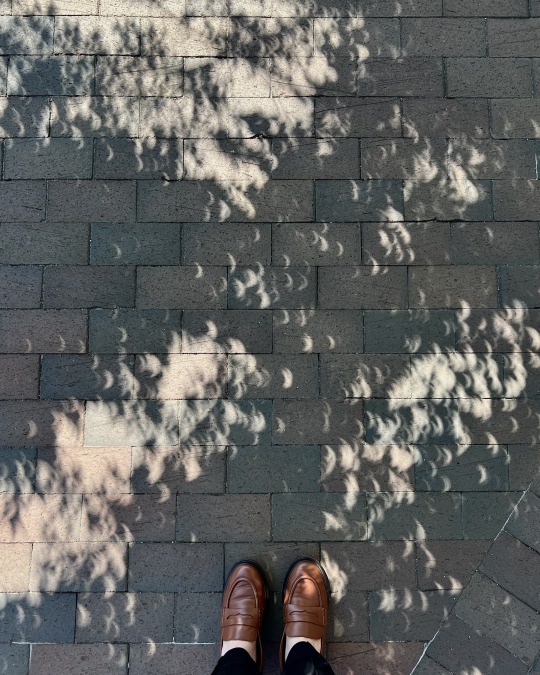



The partial eclipse Monday afternoon was so cool! I took my lunch break late so I could go sit in the park to watch it. I got myself a fancy coffee from the cafe down the block and set up camp in a park by some rose bushes. I took a timelapse video of the shadows turning to crescents but it didn’t turn out as cool as I’d hoped. Mostly watched the eclipse through a pinhole projection until some other folks who came to the park offered me one of their extra pairs of eclipse glasses. Even a partial one is so cool to witness - the light got really weird, the birds and insects were clearly uneasy, and the temperature dropped a little bit. Just eerie, but also a great way to connect with people over how neat it is to be in this big space rock together.
Doctor friend who had to Google what’s in honey mustard? He admitted to looking at the eclipse with naked eyes. Sir. I just. I can’t.
Solidly meh at trivia night, but we did win a gift card for a bonus question about the guy who recently set a world record for number of squats in 24 hours (it’s over 26,000, which, OUCH).

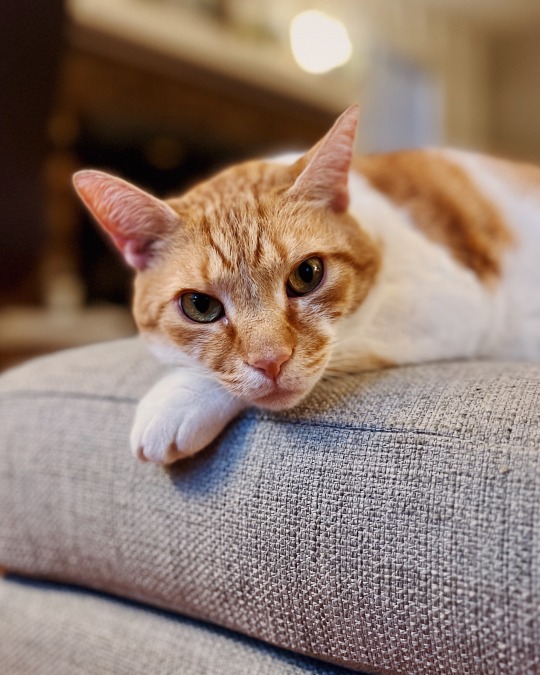

Work work work
I put down a deposit on my next tattoo! I’m nervous because I’m a baby about pain and this will be my biggest one yet, but I’m also excited. This is the artist; I love her style and am looking forward to wearing one of her pieces.
Haircut again. I welcome the fuzz and always feel so ✨clean✨. Buying my own clippers was a great idea, I love cutting it whenever I want (usually immediately after someone tells me how good it looks “now that it’s gotten longer.” Or in the words of my own father, “it looks better grown out, so you don’t look like such a dyke” [derogatory]) (filed under: phrases that make me buzz it another stop shorter just out of gay spite)



Made a flower crown for the ren faire on Saturday! I gave up trying to find something “historical” and am just going to wear a pretty sundress that I can’t wear to work and therefore don’t have many other opportunities to wear.
Renaissance faire was fun! We pet some baby animals, saw some cool performers, got neat crafts from the vendors (pretty snake bone earrings, really nice-smelling handmade soap), and paid waaaay too much for a decidedly mediocre food truck döner. Got a terrible sunburn across my back and chest (why, oh why, did I wear a low-cut dress and no hat? Oh right, to try to be cute. Am now a cute itchy lobster for my hubris) despite the layers of sunscreen (but somehow, thankfully, my face was spared)

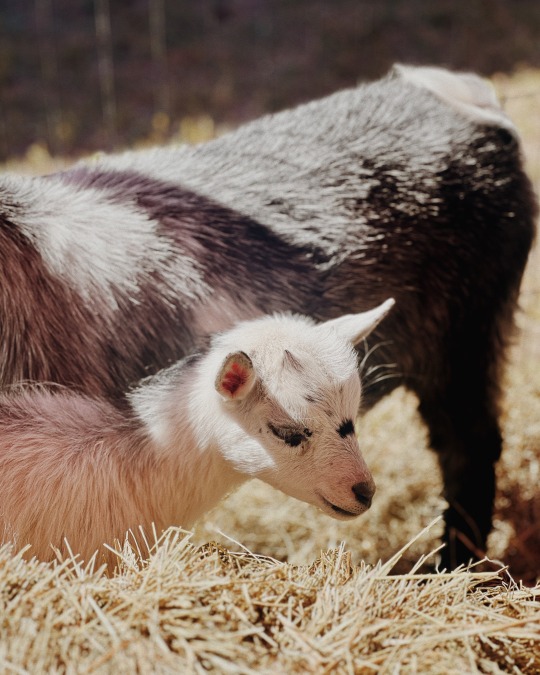

…was fun up to a point. It was extremely crowded and I got hot and hangry and there was too much noise and people and I definitely had a meltdown coming on if I tried to stick it out. Thankfully the friend I went with - while she loves conventions and festivals and doesn’t really get why I need to get away - was very cool about me ducking out early and isn’t the type to take it personally that I’d had enough and needed space and quiet. It was also good that her mom and sister joined us, so she had another ride out of the faire and I wasn’t just abandoning her. Overall it was a good time, but I don’t think I’d go again.
Sunday was far more relaxed, we got to sleep in before heading to a nearby city for the day. Had a tasty brunch at a jazz bar, wandered around the cute little downtown (and encountered a sweet bookshop cat), then explored some historical gardens.



a long, varied week. lots of thoughts. not enough reading. hopefully next week will be a bit more chill.
Lots of pictures this week -
eclipse crescent shadows | stormy skies on a walk | chinese snowball tree at tryon palace gardens | climbing roses at the gardens | butterball annoyed that I interrupted his nap | banana pudding gelato (my favorite!) at the shop near my office | derby the bookshop cat | feeling called out by some bookmarks | european columbine | ren faire | baby goats! | smol rabbit! | staff spotlit by the skylight at the jazz club | weird pepsi propaganda | tryon palace gardens
last week
#i am: so tired#there is still freaking laundry to do#it may have to wait#my brain does not want to read anything lately!!! still!!#i got through a couple of short stories for my ghost stories class and they were good but anything longer is just not sticking#catalog of little joys
3 notes
·
View notes
Photo

Mistle Thrush (Turdus viscivorus)
Family: Thrush Family (Turdidae)
IUCN Conservation Status: Least Concern
Found in northern Africa, temperate regions of Asia and almost all of Europe, the Mistle Thrush is named for the mutualistic relationship it exhibits with various species of mistletoe (a group of parasitic plants in the genus Viscum that rely on birds to spread between hosts.) During the winter, when other sources of food are scarce, mistletoes bare fruits which Mistle Thrushes heavily rely on to avoid starvation, and after the soft, nutritious flesh of the fruits have been digested the seeds remain inside a sticky membrane made up of a material known as viscin. When the seeds exit the Mistle Thrush’s body in its droppings the viscin allows them to stick to the branches of trees, with the mistletoe’s roots then growing into the tree and extracting nutrients from it to allow it to grow into a mature, fruit-baring plant. Mistle Thrushes inhabit a wide range of wooded habitats (including both natural habitats such as woodlands and human-made environments such as orchards) and generally live alone or in pairs (with individuals who have found mates often remaining with their partners for their entire lives.) When food is abundant during the spring and summer this species has a varied diet consisting of a wide range of seeds, fruits, insects, spiders, snails and slugs, and during the winter individuals or pairs will claim a small number of fruit-bearing plants (typically mistletoe, but in areas where mistletoe is not present they may also claim other trees that bare fruit in the winter, such as European Holly) as their territory, aggressively chasing off any other birds that come near their tree in order to ensure that they are never without food. Mistle Thrushes are also highly territorial during their breeding season (which lasts from early February to late May), with males fiercely guarding the area surrounding their nest from other animals, including potential predators such as owls, hawks, eagles, crows and cats (as well as species several times their size, such as Golden Eagles and even Humans.) Female Mistle Thrushes construct large, bowl-shaped nests out of sticks, grass and moss and line them with mud and leaves, after which they produce a clutch of 3-5 blue-and-brown eggs which hatch 12-15 days later, and while chicks are helpless at birth they develop rapidly and can fly at only around 14-16 days old.
--------------------------------------------------------------------------
Animal Advent Calendar - Day 24
Image Source: https://www.inaturalist.org/taxa/12735-Turdus-viscivorus
#December 24th#Mistle Thrush#Mistle Thrushes#Thrush#thrushes#bird#birds#zoology#biology#ornithology#animal#animals#wildlife#african wildlife#asian wildlife#european wildlife#mistletoe
75 notes
·
View notes
Text
Updated Flora, Fauna, and Environment of Region
Flora, Fauna, and Environment of Region
I did Flora, fauna and environment of Neldoreth here.
Flora, fauna, geography and environment of Arda
This entry is part of a series on the biodiversity and environment of Doriath.
I wanted to rewrite this to take into consideration the probable alkaline quality of the earth around Menengroth as well as the ecology of Holly forests
Region was the larger forest of Doriath, South of the river Esgalduin and North of Aros. The capital was Menengroth which was located in the northern parts of the forest, accessed by a bridge over Esgalduin and made up of a series of caverns and caves.
It is a warm temperate forest with moderate to heavy rainfall depending on the season and short winters. The biome is likely temperate broadleaf and mixed forests with the ecoregion being inspired by Atlantic, Balkan or Cantabrian mixed forests.
Unlike Neldoreth, few species are directly named aside from holly (actually a large family rather than a single species) and nightingale.
In the Lay of Leithian, we have these lines
Lo! there amid immortal flowers
the nightingales in shining bowers
sang o'er the head of Melian,
while water for ever dripped
and ran from fountains in the rocky floor.
There Thingol sat. His crown he wore
of green and silver,
and round his chair a host in gleaming armour fair…
The caves themselves are possibly limestone with dolomite and hewn marble (marble basins are described) and so the soil around the entrances is alkaline
Holly does not tolerate high levels of alkaline in the soil so although it is one of the more prominent trees of Region it likely does not grow near Menengroth. Holly also grows typically in clusters in oak and beech forests which is fitting as Doriath has both and Thingol was known as the king of beech, oak and elm
Near the entrances, wild chives, columbine, ox eye daisy along with clusters of evergreen ash trees and blackthorn.
Bird’s nest and early purple orchids can also be found closer to the caves as well
Note: I will make a separate post on the royal gardens of Menengroth if there is interest
The forest was described as being made up of holly trees, likely European and mountain holly along with a variety of holly or ilex family shrubs (for example, Box leafed holly is pruned and cultivated in and around Menengroth itself, aided by the magic of Melian.) Other trees likely grew alongside them including cedar trees, wild cherry, white oaks, pointed leaf maple, and sweet or emperor oak.
Black elder, shoreline figwort, water horsetail, heath violet and meadow soft grass grow on the borders of the forest and by the rivers along with groves of gray willow.
Also of note are wolf lichen, bearded lichen, panther cap mushroom, false death cap and death cap, devil’s bolete, wood blewit, fairy inkcap, yellowleg bonnet, bracken club fungus, eagle ferns, glade ferns, and fiddlehead fern which grow on the forest floor, upon trees themselves and on fallen trees . (mushrooms and lichens are not plants unlike ferns which are, I’ve grouped them together because of where they are in the forest)
Like in Neldoreth, a variety of species associated with ancient woodland grow especially in the spring including bluebells, crocuses, snowdrops, and dog’s bane
As always, insects are nearly impossible to do even an overview of because of the huge variety of species but here is a brief list and if anyone wants me to ever do more in depth posts on them, I’m happy to! June beetles, dead leaf mantises, blue crickets, stick insects, leaf beetles, speckled wood butterfly, small copper butterfly, holly blue butterfly, gatekeeper butterfly, and large blues in clearings and by the river.
Little bitterns, black bitterns, wood ducks, species of swallow and house martin, gray heron, Weavers, yellow, white and citrine wagtails, nuthatches, nightingale, robin, thrush, green finch, wood warbler, red kites, kestrels, and more.
Like with insects it’s hard to get a good list so this is only a selection but I’d be happy to do a longer list if anyone wants! I do personally headcanon that there are prehistoric creatures (by our world’s timeline) in the deeper woods of Doriath though I think many are North and West of Region in Neldoreth and Nivrim. In the gardens cultivated by Melian near Menengroth however you can find creatures like the hummingbird ancestor Eurotrochilus.
Wood frogs can be found in the undergrowth especially near logs and fallen trees. Golden newts are less common outside their breeding season where they are in abundance in small verbal pools.
The mammals of Region have a lot of overlap with those of Neldoreth. Musk deer, barking deer, masked shrew, sable, pale wild cats, black, silver and light red foxes, wood mice, river otters, elk, and stranger creatures too.
I kept to real creatures here but I’d be happy to talk about my ideas for others.
I will do a separate post for the rivers in more detail and as always, please feel free to send questions or requests!
89 notes
·
View notes
Note
alright so ford would be Diapheromera Femorata, the common northern walking stick. i have no idea why i picked a stick bug for him other than vibes. get elongated old man
lucy is a Lethocerus Patruelis, “Indo-east Mediterranean Giant Water Bug” fuck yeah huge ass european water bug she will fuck your shit up. the maps aren’t super clear on the distribution here but i think it’s somewhat close to russia-ish (more southeast europe but ehh) but i say it counts fuck yeah grulovian water bug
bob is a Trypodendron Lineatum, a striped ambrosia beetle :) these guys are one of the few insects who farm their own fungus as food for themselves!!! he’s a little farmer beetle!!!
still working on helmut but i’m probably either making him a butterfly, moth, or beetle
these are all soooo goooood thank you for the bugs ! i love learning about new fun bugs
8 notes
·
View notes